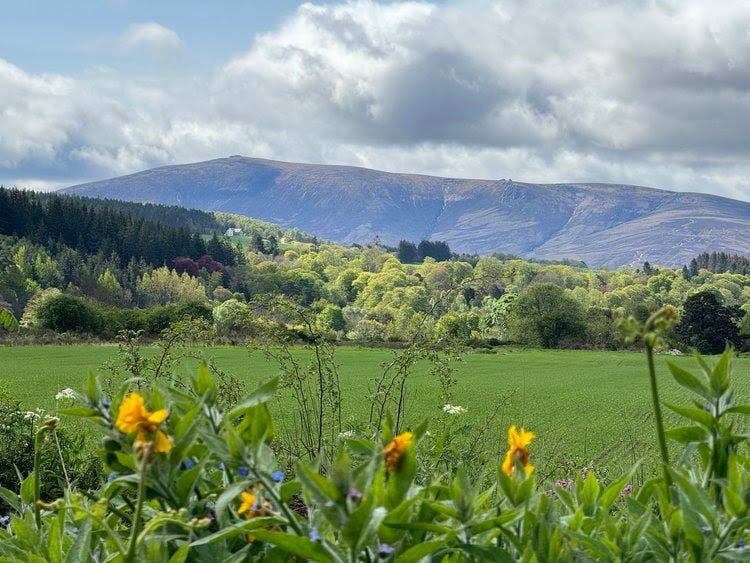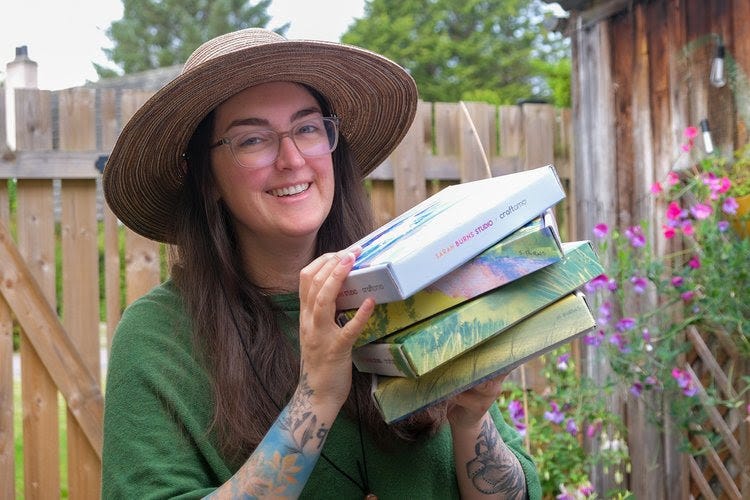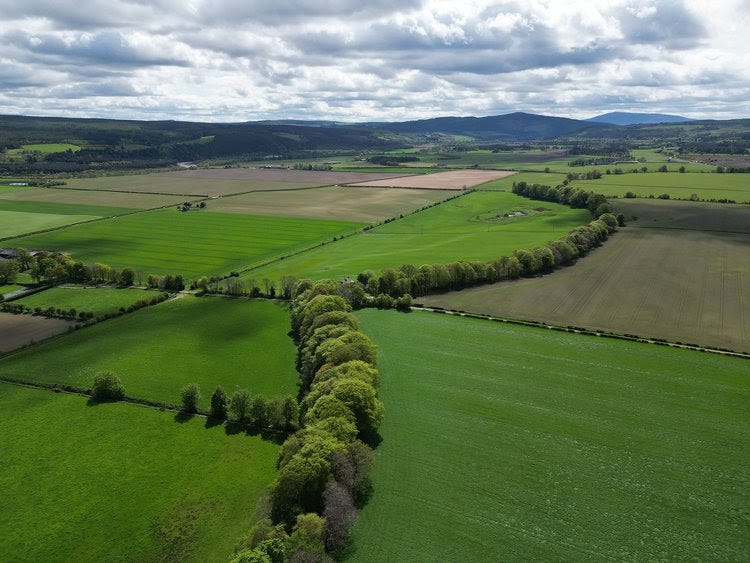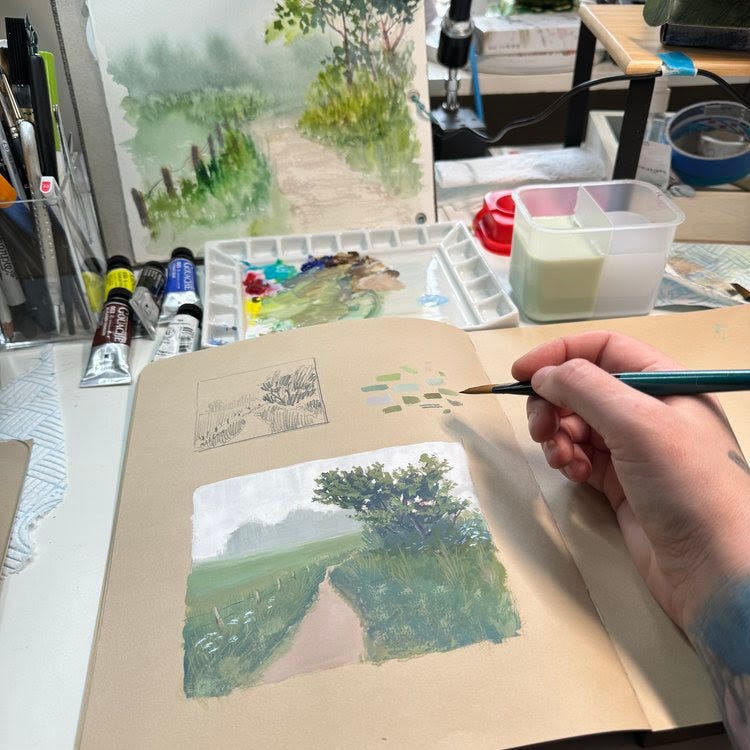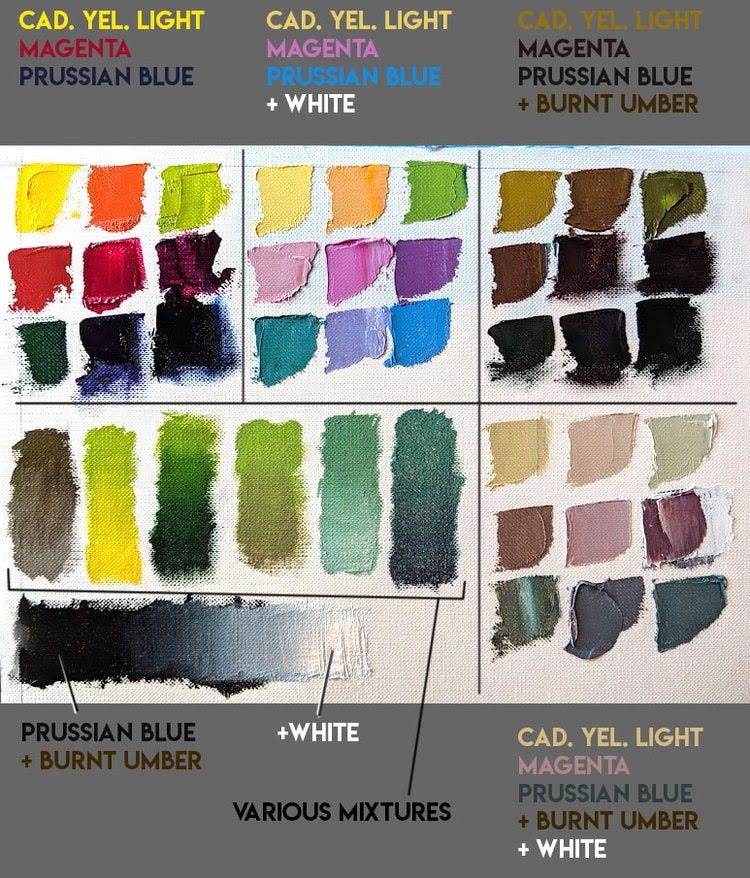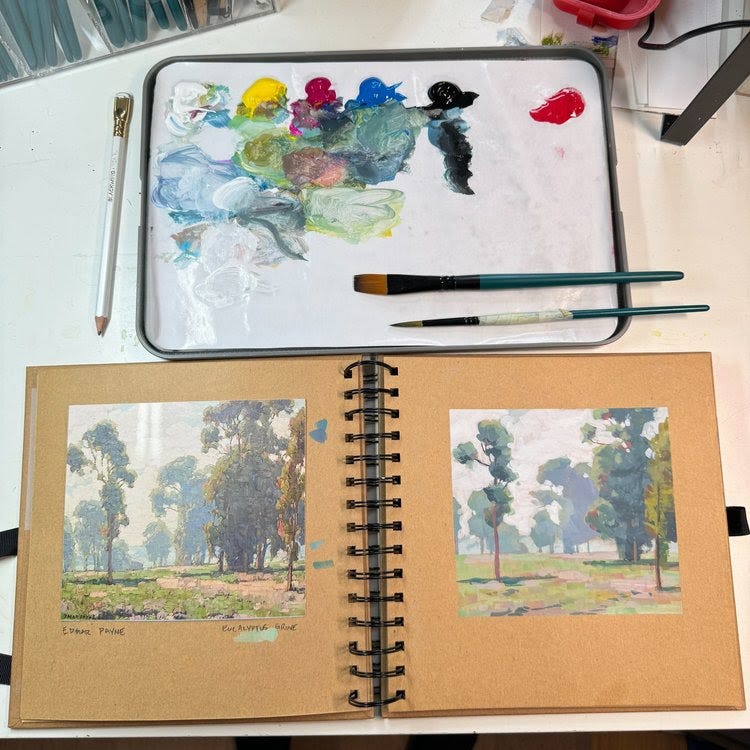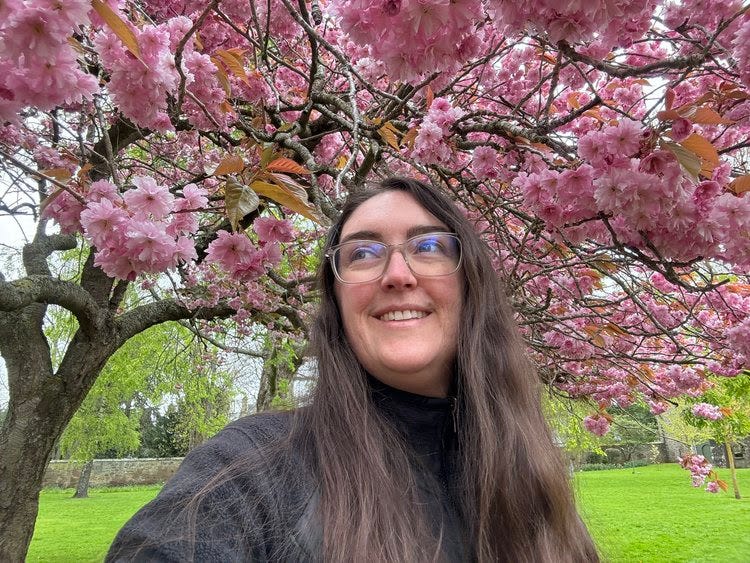Hello!
from my cold little corner of Scotland!
May in Scotland is like taking a deep breath after being deprived of air for too long. I step outside each morning and take in the sweet scented air. Everything is bursting with life, blooming, and surging forth with color. The land quickly shifts from brown to intense green, calling to me: “Sarah, come out and paint!!”
In this newsletter I’ll share my tips for how I study greens in the field.
Learn gouache with me!
Gouache Subscription boxes Available now!
After a successful launch of my Gouache Subscription boxes last year, I’m happy to announce the boxes are available again to order!
Buy here
About the Gouache Subscription Boxes
Each month you'll receive a new box in the mail with the supplies you need to paint a new tutorial. But this is not just about art supplies! I have created the same high quality tutorials that you've come to expect from me and each box will help you grow your skills and confidence in using gouache.
Learn more and see what’s inside each box in this video.
Over the course of 12 months, you'll grow a collection of premium gouache brushes (24 in total), high quality gouache (30 tubes), 100% cotton paper, washi tape, spray bottle, mixing tray, and a wealth of information that will last you a lifetime. The gouache tutorials are suitable for beginners and seasoned painters, offering tons of advice and a variety of techniques for creative landscape painting.
The Green Dilemma
I’ve listened to a lot of interviews with master artists, many of whom discuss the challenge of mixing greens. There are hundreds of articles and videos online about this topic as well. It makes me wonder, what’s so difficult about green??
How I Study Green
Imagine sitting down at a piano and expecting yourself to play Mozart fluently? No, it doesn’t work like that. The same goes for painting. And especially for understanding how to use color.
As we grow our artistic skills, we are also growing our sensitivity to color simply by observing the world closely. Look, paint, repeat. It’s that simple. But it takes a long time.
Seeing subtle nuances of color takes practice. At first we see green. After a while we start to notice shifts towards yellow, blue or red.
At the beginning, many artists go over-the-top with color (I know I did). Color is fun and pretty. Landscape artists have to deal with green a lot. Green is pretty much in everything. A common beginner mistake is to buy premixed greens and use them straight out of the tube. But the issue there is that those greens are often far too saturated. Using them often leads to an unnatural looking result.
Top: original plein air study / Bottom: new study based on my notes
My personal aesthetic has shifted over the years from focusing on vivid color everywhere in the painting to subtle shifts of grey with pops of color. Grey has become my obsession. Now I see beauty in grey, because there are so many versions of it. By using colorful greys (yes it’s a thing) we can preserve our saturation for areas of focus.
Mixing Your Own Greens
When it comes to studying greens (or any color), my first tip is to spend time in the studio mixing your colors. This helps to discover some of your options before you get outside and feel the pressure. I almost always use a limited palette of 3-5 colors, but those colors change over time. I like to experiment now and then with different combinations.
If you’ve never made mixing charts before, now is the best time. There’s not one right way to do it - you can get creative and do what works for you. The most important thing is learning about your colors. I have some videos about how I create color mixing charts, and this strategy can be applied to any medium.
Videos: The easy way. The less easy way.
Or instead of charts, I often make “color notes” outside. This is done by mixing and swatching as I go. This is a great method for fast discovery. I do this outside by staring at something then mixing a color/value that matches. I rarely get it right at first. It usually takes a few tries. Doing this next to a small sketch helps me remember what I saw.
It’s especially difficult to do this when the light is changing. Small quick sketches are best.
Later, I can take these notes to the studio with references and paint it more detailed.
Master Studies
Left Photo: Painting by Edgar Payne / Right: my gouache painting
Another excellent learning tool is to copy master artworks (known as “master studies”) in order to learn how to mix color. This takes a lot of practice and attempts. I usually need at least 3 tries to match the color I see.
Using a very limited palette, and try different versions of the primaries. Practice mixing a color as closely to the master painting as you can.
Master Artists are known for their brilliant use of art principles to create magnificent paintings. Each of us has artists we look up to - choose one that inspires YOU!
In landscape painting, a few of the masters that are worth a look are: Edgar Payne, John Singer Sargent, Joaquín Sorolla, Richard Schmid, Hyde Harris and many others! For contemporary inspiration, take a look at artists interviewed by the Plein Air Podcast (my favorite).
Remember, never copy an artists’s painting and claim it as your own. It is for learning purposes only! Always give credit to the original artist.
Watch my video about painting greens: open YouTube
On a Personal Note…
I’m a little behind on emails. It seems the summer energy has already swept me away and my calendar is packed. When it rains it pours right? Although it will take me a bit longer to share what’s been happening, I appreciate all of you being here and coming along the journey!
Take care and see you next time,
~ Sarah
Miss a previous newsletter? See the archive.
Sign up to my email newsletter to get more frequent updates.




